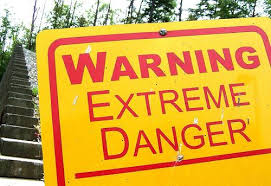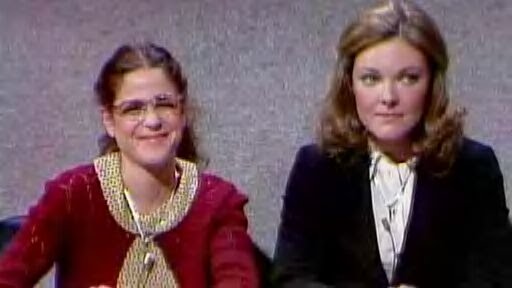Plantagenetics
Tuesday, December 2nd, 2014In which I defend the honor of the Queen…
The DNA reports are in, and the skeleton they found in that Leicester parking lot is now confirmed to be that of King Richard III. Analysis also shows he had blonde hair and blue eyes.
Somewhat overshadowing the exciting news is a discovery that came from the research team’s comparing the old king’s DNA to that of his present-day relatives. It turns out that there is a break somewhere in the male-line continuity of the Y-chromosome, the collection of genes that are only passed from father to son, suggesting a false paternity event somewhere in the timeline.
The news media, with its trademark restraint, has jumped all over this, trumpeting that the already much-maligned Richard has infidelity in his family tree, with some even suggesting that this means that the Queen may not even be the legitimate heir to the throne anymore.
Okay, let’s all take a breath now. Her Majesty’s reign is in no danger here.
I spent a lot of time this past summer with my nose buried in the Plantagenet family tree, and may be able to add a modicum of perspective.
You can read the science team’s original report here, but a brief summary should suffice. Richard III and his distant cousin Henry Somerset, Duke of Beaufort are both direct male-line descendants of King Edward III. The Duke has five male-line descendants alive today who agreed to participate in the study, and four of them share the same Y-chromosome, presumably inherited from Beaufort. The one who doesn’t suggests a false paternity event (or “cuckolding” in the parlance) at some point along the way, but that’s not the infidelity that made the headlines. Richard III’s Y-chromosome also doesn’t match the Duke’s, which means that at least one of them is not actually a male-line descendant of Edward III.
Okay, so that’s pretty saucy news in itself. But it’s an overreach to drag Queen Elizabeth II into this story for several reasons.
First of all, what is the probability that the break in paternity is even in Elizabeth’s line? Here is the family tree for the relevant players (scroll down to the “Geneology of the Y chromosome lineage” graphic). It shows fifteen paternal links between Edward III and Beaufort, and only four between Edward III and Richard III. Assuming only one false paternity (which is all that’s been established here) and that all paternity events are equally likely to be false, the odds are 15:4 in favor of Beaufort being the non-heir rather than Richard. Also, if Richard III’s own parentage is the false one, it doesn’t affect Elizabeth, as she is descended from Richard’s older brother King Edward IV. So the odds of the break even being in Elizabeth’s lineage is 16:3 against or just under 16%.
Still, a 16% chance the Queen is illegitimate would indeed be headline-worthy, but let’s examine this claim more closely. Here it may be helpful to refer to the family tree I put together for Shakespeare’s King Richard III. In the column all the way to the right, close to the center of the column, you can find Henry Tudor, Earl of Richmond. This is the future King Henry VII. Five slots down, you can find Elizabeth of York.
Henry and Elizabeth will wed, and their offspring will include King Henry VIII and his sister Margaret Tudor. If you look one column to the left, all the way at the bottom, you will see Richard Plantagenet, Duke of Gloucester. This is the future King Richard III. From here on, I will use “Richard Plantagenet” to refer to his father, the Duke of York, who is also on the chart.
Queen Elizabeth II is descended from Margaret Tudor, which means that she is a descendant of Richard III’s brother Edward IV. Edward became king as a result of the Wars of the Roses, which were fought between the houses of York and Lancaster. His claim comes from his father, Richard Plantagenet.
Richard Plantagenet does indeed inherit his surname from his paternal lineage through the York line, being the grandson of Edmund of Langley, the First Duke of York. However, Richard Plantagenet stakes his claim to the throne from his mother’s side, as Anne Mortimer is descended from Edmund of Langley’s older brother, Lionel, Duke of Clarence. What’s more, Richard Plantagenet’s wife, Cecily Neville, who is mother to Edward IV and Richard III, is the granddaughter of John of Gaunt, who is also an older brother to Edmund of Langley (though younger than Lionel, Duke of Clarence). Henry VII is also descended from John of Gaunt.
What all of this means is that even if the Y-chromosomal break is in the 16% that would make Richard Plantagenet illegitimate, it would not affect Edward IV’s claim to the throne. It would therefore not affect Margaret Tudor’s legitimacy, nor would it affect the current monarch.
More to the point, it’s been almost one thousand years since William the Conqueror defeated the Anglo-Saxons in the Battle of Hastings, beginning the dynasty of which Queen Elizabeth II is the current representative. What else don’t we know? It seems very unlikely that, were a complete set of the genetic data magically available to us, Elizabeth would emerge as the clear genealogical winner. Not only do we have a millennium of regal shenanigans to wrangle with, but there is also the human element to consider. A lot of the lineage disputes from the past have been settled by people’s decisions and actions: who had political power, who was a bastard, who won a war, who was the right or wrong religion, etc. The question of whether women could inherit the crown changed the equation at several crucial junctures, so applying a single standard throughout English history would certainly change the outcome.
The bottom line is that we basically don’t know anything about anything, and we certainly don’t know much more today than we did yesterday. Queen Elizabeth shouldn’t start packing her bags based on this new revelation.
UPDATE: In the post, I claim the odds of the false paternity event being in the Queen’s lineage is 16:3 against. However, she is also descended from two other candidates: John of Gaunt and his son John Beaufort, the Earl of Somerset. So the odds of the break being in her ancestry would actually be 14:5 against. But she doesn’t derive her claim to the throne through this line either, so the rest of the argument still stands. See the comments for a clearer explanation.












